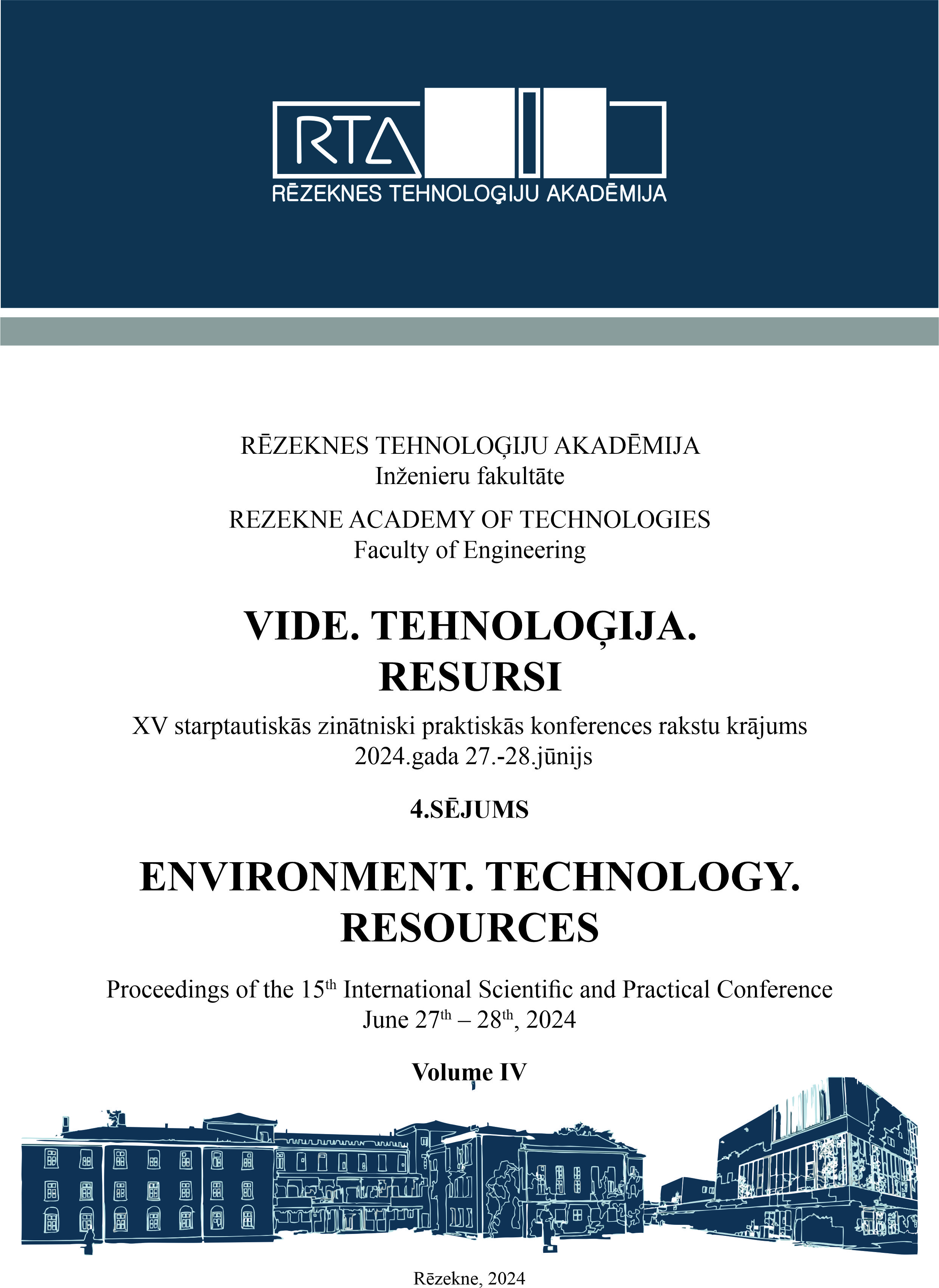METHOD FOR KINETIC ARMOUR-PIERCING MUNITIONS EFFECTIVENESS ESTIMATION
DOI:
https://doi.org/10.17770/etr2024vol4.8193Keywords:
weaponeering, engagement, penetrationAbstract
This paper presents a mathematical model and a computational module for armour-piercing munition (APM) effectiveness estimation. The topicality of this research arises from the necessity to automate the weaponeering process as part of Phase 3 of the Joint Targeting Cycle. The main objective of the study is to analyse the penetrator's structural material and munition's geometric characteristics impact over the depth of penetration into homogeneous steel armour plate Class I, in accordance with MIL-DTL-46100E/2008 standard. Scientific methods analysis, math modelling, data collection, simulation and synthesis were used during the study. As a result, the following cconclusions were made: 1) the armour-piercing munitions’ effectiveness depends mainly on the ratio between penetrating rod’s density and the armour density, but not on the hardness of their penetrating elements; 2) the proposed model is an approximate empirical technique for armor-piercing munition effectiveness estimation; 3) iteratively finding solutions for different input variables makes it possible to determine the input conditions necessary to realize the desired damage effect on a target; 4) the computational module could be applied to the weaponeering process as part of the Joint Targeting Cycle.
References
Ministry of Defence of the Republic of Bulgaria, NP-3.3(A) Doktrina za vyzdushni operacii, Sofia, 2020.
Ministry of Defence of the Republic of Bulgaria, NP-3.9 Doktrina za syvmestno opredeljane i porazjavane na celite, Sofia, 2013.
K. Petkov, “Usyvyrshenstvane na planiraneto na operacii chrez standartiziran targeting model”, Dissertation, Rakovski National Defence College, Sofia, 2018.
M. R. Driels, “Weaponeering: An Introduction”. Third Edition, Volume 1, Virginia: AIAA Inc, 2019.
R. Dimitrov, “Bojno izpolzvane na TA vyv vyzdushnite operacii”, Rakovski National Defence College, Sofia, 2019.
V. Zaporozhec, “Boevaja effektivnostj sredstv porazhenija i boepripasov”, Sankt-Peterburg: Baltijskij gosudarstvennыj tehnicheskij universitet, 2006.
W. S. Andrews, “Depleted Uranium on the Battlefield. Part 1 - Ballistic Considerations”, Canadian Military Journal, vol. 4, no. 2, Spring 2003, p.p. 41–46. [Online]. Available: http:// http://www.journal.forces.gc.ca/vo4/no1/research-recherch-eng.asp. [Accessed: Jan. 25, 2024].
J. D. Walker, “Modern Impact and Penetration Mechanics”, Cambridge: Cambridge University Press, 2021.
The Engineering ToolBox. [Online]. Available: https://www.engineeringtoolbox.com/density-solids-d_1265.html. [Accessed: Jan. 25, 2024].
American Society for Testing and Materials, “ASTM A370 Standard Test Methods and Definitions for Mechanical Testing of Steel Products, ed. 2022, ASTM International, ICS Code: 77.040.10”. [Online]. Available: https://standards.iteh.ai/catalog/standards/astm/40dea6f1-3b28-42d9-900f-08bf0a1ae101/astm-a370-10. [Accessed: Jan. 25, 2024].
Downloads
Published
Issue
Section
License
Copyright (c) 2024 Andon Andonov, Radoslav Chalakov

This work is licensed under a Creative Commons Attribution 4.0 International License.



